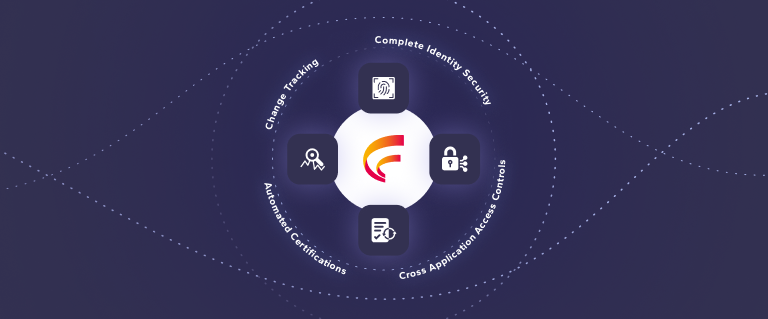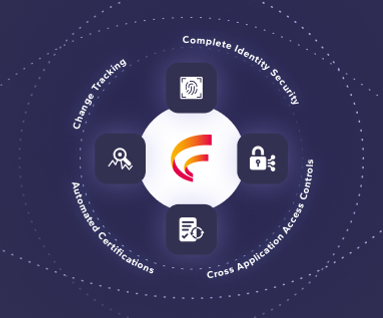Tailoring Access Risk Policies: Customizing Risk Rulesets for Your Organization's Unique Needs
By Chris Aramburu
06/13/2023
3min read

In today's complex digital environment, organizations face a myriad of challenges in managing and protecting their information assets. Organizations must recognize the importance of separation of duties (SOD) or "toxic pairs", access to sensitive data or configurations, and associated risks. With the growing need for fine-grained access control, companies are increasingly turning to Identity Governance and Administration (IGA) and Access Governance SaaS platforms like Fastpath to help manage access and monitor risks. While Fastpath offers out-of-the-box rulesets to address common access governance needs, it's crucial for organizations to customize these rulesets to align with their specific risk profiles, regulatory obligations and customizations. In this blog, we'll explore the importance of customizing access risk policies and provide practical tips for tailoring them to your organization's unique needs.
The Limitations of Traditional IGA Applications and Coarse-Grained Controls
Traditional coarse-grained controls in IGA applications often fail to provide the necessary precision for today's complex IT environments, leading to false positives and false negatives. This is because coarse-grained controls often rely on the entitlement or role name without considering the underlying authorizations being provisioned. Fastpath’s ability to scale down to fine-grained identity and risk analytics offer a more effective approach by delivering object-level insights and greater accuracy in managing user access. This granular view helps organizations eliminate false positives and false negatives, streamline compliance, and make more informed decisions about access governance and security strategies.
Understanding Risk Rulesets
Risk rulesets incorporate permission-level security of applications, enabling the monitoring and management of separation of duties (SOD) and sensitive access risks. Regardless of the application's vehicle for delivering authorizations (i.e., entitlement, role, security group, permission set, etc.), Fastpath has the capability to assess the fine-grained underlying permissions. These rulesets consist of risks, their respective criticality levels, and collections of incompatible permissions, also known as toxic pairs. Customizing fine-grained risk rulesets allows organizations to effectively address their unique risks and compliance requirements while providing improved visibility and control over access governance.
Understanding Your Risk Profile
Before customizing your risk rulesets, it's essential to understand your organization's risk profile. This includes assessing your technology stack, people, and processes to identify potential vulnerabilities and threats. Your risk universe, appetite, and threat landscape will determine the most appropriate access risk policies for your organization.
Adapting to Regulatory Obligations
Organizations operate under different regulatory obligations depending on their industry, location, and size. Customizing your risk rulesets ensures that you comply with relevant regulations, such as GDPR, HIPAA, or SOX, and avoid costly penalties or reputational damage.
Leveraging Out-of-the-Box Rulesets
Fastpath provides out-of-the-box rulesets for monitoring fine-grained access to enterprise applications such as Dynamics, Oracle, Salesforce, SAP, Workday and more! These rulesets serve as a starting point, allowing you to customize them to suit your organization's specific requirements. As an example, customers should evaluate each in-scope application for customizations (i.e., transactions or objects) and map them accordingly.
Collaborating with Stakeholders
Involving key stakeholders, such as IT, security, compliance, business teams, and audit, in the customization process ensures a holistic approach to access risk policy development. This collaboration enables you to create rulesets that balance security needs with operational efficiency and user experience. This entails risk definition, impact scoring, defining compensating or mitigating controls, mapping customizations, and more.
Continuous Monitoring and Improvement
Access risk policies should be continuously monitored and updated to keep pace with the evolving technology, threat landscape, and regulatory changes. Regularly reviewing your customized rulesets and access risk policies allows you to identify gaps and opportunities for improvement.
Conclusion
Unlocking robust security in today's sophisticated IT world calls for a two-step approach. First, go beyond just defining roles or entitlements - delve deeper into permission level access to avoid audit findings and maximize your access governance strategy's effectiveness. Second, don't stick with one-size fits all rulesets - customize them easily in Fastpath to fit your organizations specific needs. It's time to act: Fastpath stands ready to help guide you through this process, offering solutions that handle risk and bolster security. Don't wait - Contact us today, and let's start managing your organizations identity, access and risk together.











 (515) 276-1779
(515) 276-1779  (515) 864-0318
(515) 864-0318  info@gofastpath.com
info@gofastpath.com